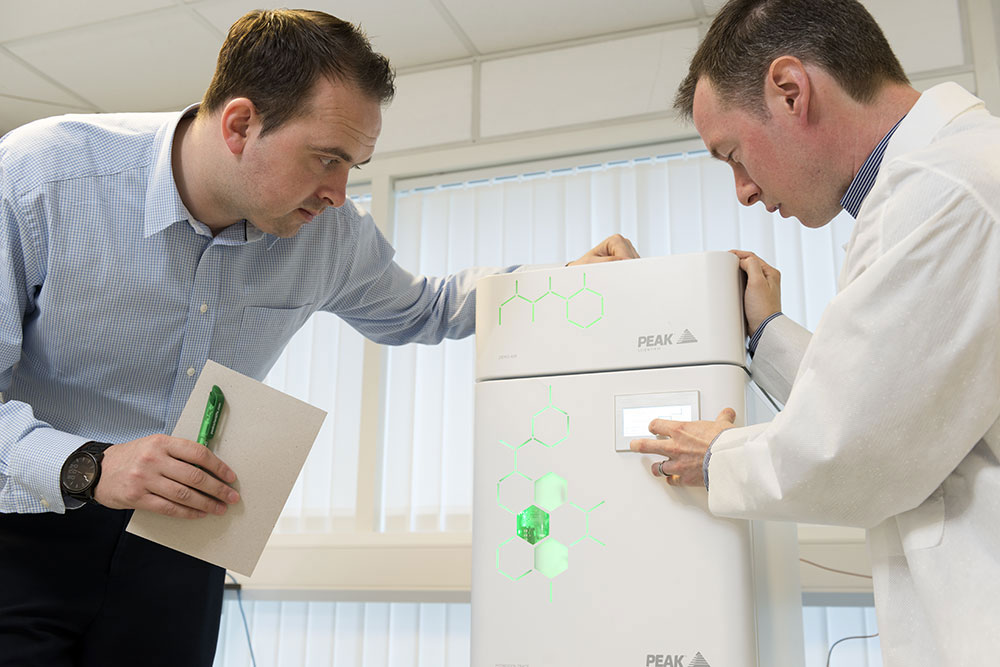Why labs in Denmark should switch to gas generators
As Science advances, technology advances to keep up with it. This is because cutting-edge scientific techniques require advanced scientific instruments. Where those advanced scientific instruments require a gas supply, it is important that they have the best gas supply possible to ensure accurate results. The best gas supply possible doesn’t come from outdated gas cylinders.
Gas cylinders have been widely used in Denmark because they were the best available option for delivering gas to, and storing gas in, a laboratory. However, they have never been renowned for the quality of the gas they supply.

Gas purity is a particular problem with gas cylinders, which can vary in purity from cylinder to cylinder and also from first to last use of the same cylinder. Each time a gas cylinder is used there is potential for contaminants to enter the gas stream. This is why it is widely recommended to abandon the last 10% of cylinder gas, as this will be the most polluted.
Purity is never a concern with a hydrogen or nitrogen generator. If your lab in Denmark requires nitrogen or hydrogen gas for GC or LC-MS, a nitrogen or hydrogen generator can provide a constant gas supply at the exact purity your instrument requires.
In addition to a providing a consistent purity of gas, another benefit of hydrogen and nitrogen generators is that they never run out of gas. This means that, with a gas generator, you will never run out of gas mid-analysis. This is a stark contrast to gas cylinders, which, in a typical lab, usually run out in around 4 days, meaning they must be continually monitored, moved and replaced. In addition to running out of gas, gas cylinders take up valuable lab staff time with change overs and monitoring, not to mention placing orders, receiving deliveries and storing stock. All of this wasted time is time that could be saved by switching to a gas generator.
Gas cylinders also present a safety risk. They can be heavy and cumbersome to move and staff in any laboratory in Denmark who are required to move cylinders should be properly trained how to do so safely. There is also the greater concern of a gas cylinder being damaged and endangering lab staff and damaging equipment. If a hydrogen cylinder were to develop a leak the release of pressure could propel the cylinder into the nearest object at great speed, or the hydrogen could spontaneously combust once it’s LEL has been reached. Were a nitrogen cylinder to leak there would be no risk of explosion but there would be a very real risk of asphyxiation.
These dangers can be eliminated by switching your lab’s gas supply to a gas generator. A hydrogen generator from Peak Scientific generates hydrogen on demand so only a minimal amount is ever stored, never enough to reach the LEL in even the smallest laboratory. It’s also highly unlikely that your Peak hydrogen generator would develop a leak to begin with. The same can be said of Peak Scientific nitrogen generators, which even in the unlikely event of a leak, would never store enough nitrogen to present an asphyxiation risk. Also, with a hydrogen or nitrogen generator, once the generator has been installed, there is no need for staff to move it, as is required when using gas cylinders.
Another benefit of switching your gas supply to a gas generator is the control it will give you over your gas costs. With a gas generator you generate gas on demand, so aside from the purchase cost of your generator, you will never need to pay for your gas. This is not the case with gas cylinders where ever-increasing gas costs need to be met, in addition to renting the gas cylinders and paying for deliveries.
Gas prices, gas cylinder rental and delivery charges are all subject to change which can make them very difficult to plan into a laboratory budget. By comparison, A hydrogen or nitrogen generator for your GC or LC-MS gas supply is easy to factor into your budget. Aside from the generator purchase cost the only other cost to consider is for annual generator maintenance, and usually these costs can be ‘locked-in’ for a number of years with a maintenance contract.